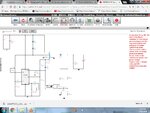Follow along with the video below to see how to install our site as a web app on your home screen.
Note: This feature may not be available in some browsers.
Look more closely at the posts above.where is circuit
You may also have decided whether your SMPS will be mains- or battery-powered.

then what should be my first design of smps?
For instance: **broken link removed**
what is this sir?
what the diode value?